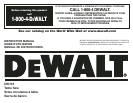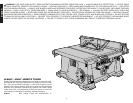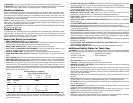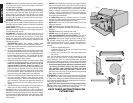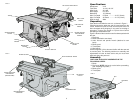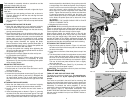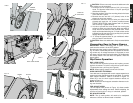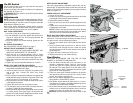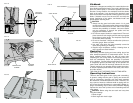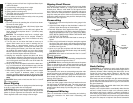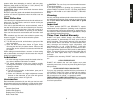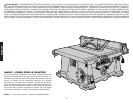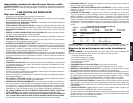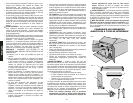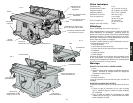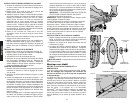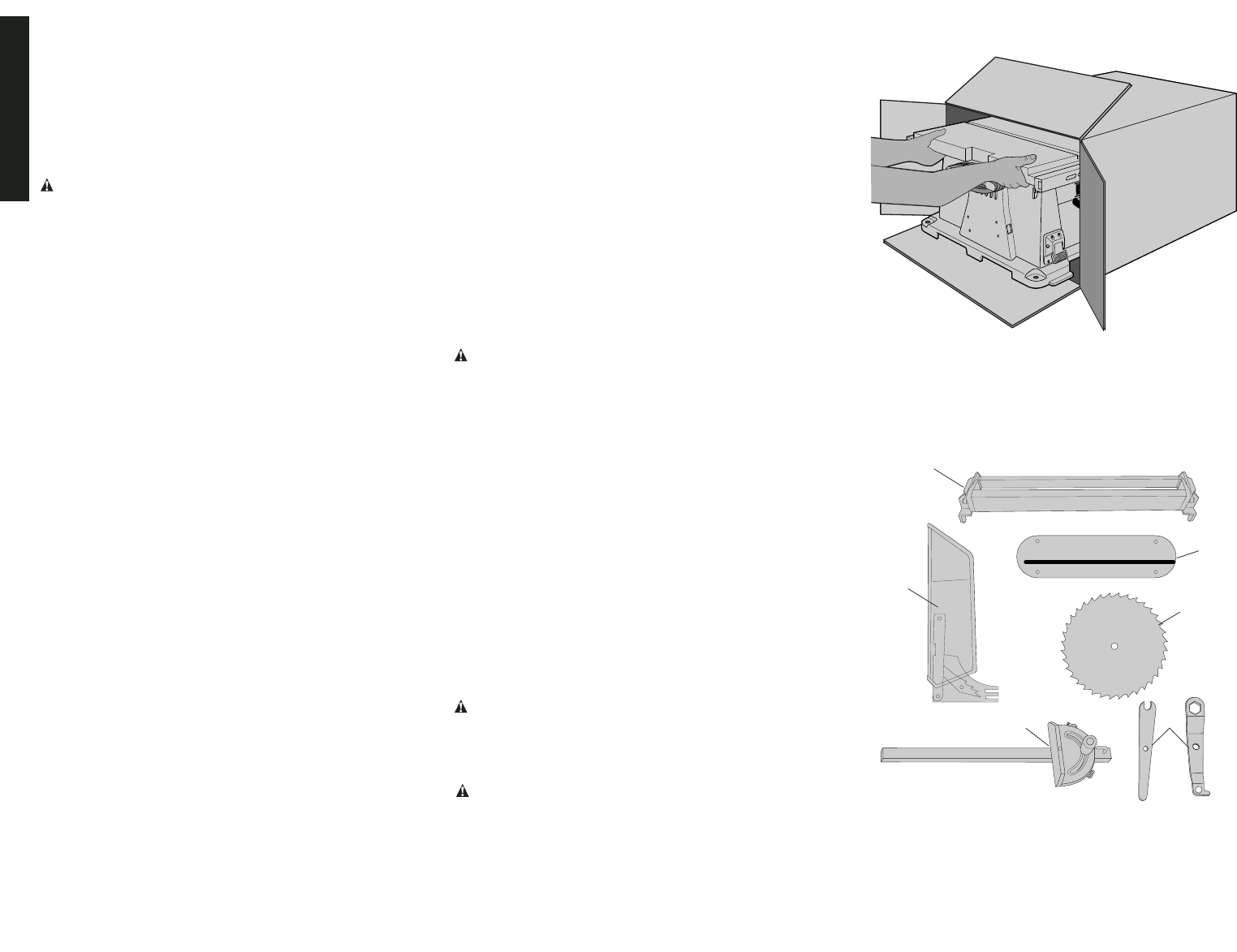
• NEVER hold onto or touch the “free end” of the workpiece
or a “free piece” that is cut off, while power is ON and/or
the saw blade is rotating.
• IF YOU STALL OR JAM the saw blade in the workpiece,
turn saw OFF, remove the workpiece from the saw blade,
and check to see if the saw blade is parallel to the miter
gauge slots or grooves and if the splitter is in proper
alignment with the saw blade. If ripping at the time, check
to see if the rip fence is parallel with the saw blade.
Readjust as indicated.
WARNING: Do not allow familiarity (gained from frequent
use of your saw) to replace following safety rules. Always
remember that a careless fraction of a second is sufficient
to inflict severe injury.
• MAKE SURE your fingers do not contact the terminals of
the power cord when installing or removing the plug to or
from the line power source.
• KICKBACKS - Kickbacks can cause serious injury. A
kickback occurs when a part of the workpiece binds
between the saw blade and the rip fence, or other fixed
object, and rises from the table and is thrown toward the
operator. Kickbacks can be avoided by attention to the
following conditions:
KICKBACKS—HOW TO AVOID THEM AND
PROTECT YOURSELF FROM POSSIBLE INJURY.
a) Be certain that the saw blade is parallel to the rip fence.
Adjust fence if not parallel.
b) Do not rip by applying the feed force to the section of the
workpiece that will become the cut-off (free) piece. Feed
force when ripping should always be applied between
the saw blade and the fence…use a push stick for short
work, 6" (152mm) wide or less. For less than 2" (51mm)
wide, you must use a special fixture.
c) Keep saw blade guard, splitter and anti-kickback teeth
in place and operating properly. Keep teeth sharp. If
teeth are not operational, return your unit to the
nearest D
EWALT Service Center for repair. The
splitter must be in alignment with the saw blade and the
teeth must stop a kickback once it has started. Check
their action before ripping by pushing the wood under
the anti-kickback teeth. The teeth must prevent the
wood from being pulled toward the front of the saw.
d) Plastic and composition (like hardboard) materials may
be cut on your saw. However, since these are usually
quite hard and slippery, the anti-kickback teeth may not
stop a kickback. Therefore, be especially attentive to
following proper set up and cutting procedures for
ripping.
e) Use saw blade guard and splitter for every operation for
which it can be used, including all through sawing.
• DO NOT leave a long board (or other workpiece)
unsupported so the spring of the board causes it to shift on
the table. Provide proper support for the workpiece, based
on its size and the type of operation to be performed. Hold
the work firmly against the fence and down against the
table surface.
• NEVER use a length stop on the free end of the workpiece
when crosscutting. Never hang onto or touch the free end
of the workpiece when crosscutting, or a free piece that is
cut off when ripping while power is ON and/or the saw
blade is rotating. In short, the cut-off piece in any “thru-
sawing” (cutting completely through the workpiece)
operation must never be confined — it must be allowed to
move away from saw blade.
• IF YOUR SAW makes an unfamiliar noise or if it vibrates
excessively, cease operating immediately until the source
has been located and the problem corrected.
• KEEP OUT of the line of saw blade. Stand to the side
whenever possible.
• USE a push-stick when required. (See page 9)
• PAY particular attention to instructions on reducing risk of
kickback.
• DO NOT perform any operation free hand.
• NEVER reach around, behind or over saw blade.
• USE RECOMMENDED ACCESSORIES. The use of
improper accessories may cause risk of personal injury.
WARNING: Some dust created by power sanding, saw-
ing, grinding, drilling, and other construction activities con-
tains chemicals known to cause cancer, birth defects or
other reproductive harm. Some examples of these chemi-
cals are:
• lead from lead-based paints,
• crystalline silica from bricks and cement and other
masonry products, and
• arsenic and chromium from chemically-treated lum-
ber (CCA).
Your risk from these exposures varies, depending on how
often you do this type of work. To reduce your exposure to
these chemicals: work in a well ventilated area, and work
with approved safety equipment, such as those dust masks
that are specially designed to filter out microscopic particles.
• Avoid prolonged contact with dust from power sand-
ing, sawing, grinding, drilling, and other construc-
tion activities. Wear protective clothing and wash
exposed areas with soap and water. Allowing dust to
get into your mouth, eyes, or lay on the skin may promote
absorption of harmful chemicals.
WARNING: Use of this tool can generate and/or disburse
dust, which may cause serious and permanent respiratory
or other injury. Always use NIOSH/OSHA approved respira-
tory protection appropriate for the dust exposure. Direct par-
ticles away from face and body.
CAUTION: Wear appropriate hearing protection dur-
ing use. Under some conditions and duration of use, noise
from this product may contribute to hearing loss.
SAVE THESE INSTRUCTIONS FOR
FUTURE USE
English
1
4
2
3
6
5
FIG. 2
FIG. 1
2



